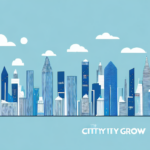Understanding Scarcity and Its Influence on Pricing Strategies
In today's competitive business landscape, pricing strategies are pivotal in determining a company's success. While balancing competitiveness and profitability is a common challenge, the concept of scarcity introduces a powerful tool for influencing pricing dynamics. This article explores the multifaceted impact of scarcity on pricing, offering in-depth analysis supported by data and insights from reputable sources.
The Economic Principles of Scarcity
Defining Scarcity in Economics
Scarcity refers to the limited availability of a product or service, a fundamental principle in economics. Scarcity occurs when the demand for a resource exceeds its available supply, affecting all aspects of supply and demand.
One key implication of scarcity is the necessity for individuals and businesses to make strategic choices regarding resource allocation. For example, a company with limited capital may need to choose between investing in research and development or expanding its marketing efforts. Similarly, an individual with constrained time might opt between working overtime to increase earnings or dedicating time to personal pursuits.
Scarcity also plays a crucial role in determining prices. When a product or service is scarce, its price typically increases as demand surpasses supply. This phenomenon provides opportunities for businesses to profit by either increasing the supply of the scarce resource or developing substitutes that fulfill the same need.
Scarcity's Impact on Perceived Value and Consumer Behavior
Enhancing Perceived Value Through Scarcity
Scarcity significantly boosts the perceived value of a product or service. Customers are generally willing to pay a premium for items they perceive as rare or hard to obtain. According to a study by Nielsen, products perceived as scarce can lead to customers being willing to pay up to twice as much compared to non-scarce alternatives.
However, it's essential to recognize that scarcity alone doesn't elevate a product's value. The item must also be desirable and of high quality. A scarce product that lacks demand or suffers from poor production and distribution practices may see its value diminished due to negative customer experiences.
Creating Urgency in the Marketplace
Scarcity is a powerful marketing tool that can create a sense of urgency among buyers, compelling them to act swiftly before a product or service becomes unavailable. Strategies such as limited-time offers and exclusive products leverage scarcity to drive immediate sales.
Research indicates that scarcity not only spurs urgency but also enhances the perceived value of offerings. When consumers perceive a product as scarce, they often associate it with higher quality and exclusivity, increasing their willingness to pay a premium price.
Supply and Demand Dynamics in Pricing
The Law of Supply and Demand
The interplay between supply and demand is a cornerstone of pricing strategies. According to the Law of Supply and Demand, when supply is low and demand is high, prices tend to rise, and vice versa. This relationship isn't always immediate, as price adjustments can lag behind changes in supply and demand due to factors like production time and distribution logistics.
External factors, including government regulations and natural disasters, can also influence pricing by affecting supply chains and market demand. Understanding these dynamics is essential for businesses aiming to craft informed and effective pricing strategies.
Psychological Influences on Pricing
Psychological factors deeply intertwine with pricing strategies, especially concerning scarcity. The fear of missing out (FOMO) drives consumers to act quickly when they believe a product is limited. Additionally, scarcity is often linked to perceptions of luxury and exclusivity, making rare items more desirable.
Another influential factor is the anchoring effect, where consumers rely heavily on the first piece of information they receive (such as a high initial price) to make subsequent price judgments. This can lead to increased sales of higher-priced items when consumers perceive other products as more affordable in comparison.
Implementing Scarcity in Marketing Strategies
Effective Scarcity-Based Marketing Tactics
Limited editions and exclusive offers are prevalent tactics to instill scarcity. By releasing exclusive products or special editions, companies can create urgency and elevate consumer willingness to pay. This approach not only drives immediate sales but also reinforces brand loyalty among dedicated customers.
Examples include:
- Apple: Strategically releases limited quantities of new iPhone models, resulting in rapid sell-outs and sustained high demand.
- Luxury Car Manufacturers: Brands like Ferrari and Lamborghini offer limited edition models, reinforcing their exclusivity and driving customer interest.
- Fashion Brands: Companies such as Louis Vuitton and Chanel release limited edition collections periodically, maintaining their image as high-end and exclusive.
Case Studies on Scarcity-Driven Success
Various case studies highlight the effectiveness of scarcity in driving sales:
- Starbucks: Employs limited edition holiday drinks and merchandise, creating exclusivity and urgency that lead to increased sales during peak seasons.
- Gucci: Produces special edition bags in limited quantities, which are highly sought after and bolster the brand's equity among consumers.
- Amazon and Zappos: Utilize scarcity by displaying limited stock availability and countdown timers during sales, prompting customers to make faster purchasing decisions.
Potential Risks and Ethical Considerations
Maintaining Customer Trust
While scarcity-based pricing can be effective, it comes with potential risks:
- Customer Trust: Artificial scarcity or false urgency can lead to customer distrust if consumers feel misled.
- Market Limitations: Scarcity strategies may not be effective for all products, especially those with easily replicable alternatives.
- Ethical Concerns: Charging higher prices for scarce necessities can lead to accusations of price gouging and harm a company's reputation.
Businesses must balance scarcity with ethical considerations and ensure transparency to maintain long-term customer relationships.
Ethical Implementation of Scarcity
It's essential to implement scarcity ethically to avoid negative consumer perceptions and potential backlash. Strategies should be transparent and genuine, ensuring that scarcity is a true reflection of limited availability rather than a manufactured tactic to manipulate consumers.
Future Trends in Scarcity-Driven Pricing
Innovations Shaping Scarcity Strategies
Advancements in technology are paving the way for innovative scarcity-driven pricing models. Emerging trends include:
- Virtual Reality Experiences: Creating exclusive virtual experiences accessible only to a limited number of customers.
- Social Media Exclusives: Offering exclusive content or products to a select group of followers on social platforms.
- Blockchain and NFTs: Utilizing blockchain technology to create verifiable limited editions and digital scarcity.
These innovations suggest that scarcity will continue to be a vital component of pricing strategies, adapting to new technologies and evolving consumer behaviors.
Conclusion
Scarcity remains a potent tool in pricing strategies, capable of generating urgency, enhancing perceived value, and driving revenue growth. However, companies must employ scarcity thoughtfully, balancing it with ethical practices and maintaining trust to ensure sustained success. By understanding the economic principles, psychological factors, and emerging trends, businesses can leverage scarcity to their advantage while fostering long-term positive relationships with consumers.




















